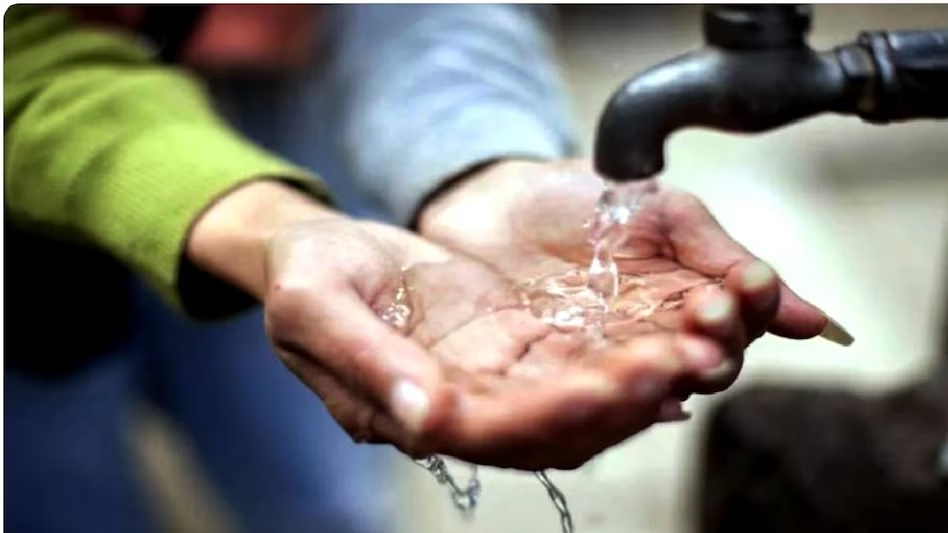
jal jeevan mission
The Jal Jeevan Mission (JJM) is a flagship initiative launched by the Government of India to ensure universal access to safe and adequate drinking water for every rural household. With a commitment to sustainable development and community participation, the mission aims to transform the water supply infrastructure in rural India. This article delves into the details of Jal Jeevan Mission, its objectives, implementation strategies, and the challenges it faces.
Table of Contents
What Is the Jal Jeevan Mission?
The Jal Jeevan Mission, launched on August 15, 2019, by Prime Minister Narendra Modi, is a central government program aimed at providing functional household tap connections (FHTC) to every rural household by 2024. Managed by the Ministry of Jal Shakti, the mission’s key focus is to ensure that clean and potable drinking water is available in sufficient quantity to all.
Objectives of Jal Jeevan Mission
The core objectives of the Jal Jeevan Mission can be summarized as follows:
Ensuring Access to Safe Drinking Water
One of the primary goals is to provide 55 liters of water per person per day to every rural household through functional tap connections.
Promoting Sustainable Water Management
The mission emphasizes the need for source sustainability by encouraging rainwater harvesting, groundwater recharge, and efficient water usage.
Reducing Water-Borne Diseases
Access to clean drinking water reduces the incidence of water-borne diseases such as diarrhea, cholera, and typhoid, improving overall public health.
Strengthening Community Participation
The Jal Jeevan Mission encourages active participation from communities in planning, implementation, and maintenance of water supply systems to ensure long-term sustainability.
Implementation Strategy of Jal Jeevan Mission
The Jal Jeevan Mission employs a bottom-up approach for planning and execution, ensuring active involvement of the community, local government, and state governments.
Key Components of Implementation
Decentralized Governance
The program delegates significant responsibility to Gram Panchayats and Village Water & Sanitation Committees (VWSCs) to monitor and maintain water supply systems.
Convergence with Other Programs
The mission works in synergy with other government schemes like Swachh Bharat Mission and Mahatma Gandhi National Rural Employment Guarantee Act (MGNREGA) to promote water conservation and infrastructure development.
Technological Innovations
The use of GIS-based mapping, IoT-enabled monitoring, and solar-powered water pumps ensures the effective implementation of water supply schemes, particularly in remote areas.
Funding Mechanism of Jal Jeevan Mission
The Jal Jeevan Mission follows a fund-sharing pattern between the central and state governments.
- For general states, the central government bears 50% of the project cost.
- For Himalayan and Northeastern states, the central share is 90%.
- In Union Territories, the central government provides 100% funding.
Additionally, the mission encourages contributions from community members and other stakeholders to instill a sense of ownership and responsibility.
Progress and Achievements of Jal Jeevan Mission
Since its inception, the Jal Jeevan Mission has made significant strides toward achieving its objectives.
Key Milestones
Increase in Tap Connections
As of 2024, over 12 crore rural households have been provided with functional household tap connections, covering nearly 62% of the total rural population.
Focus on Aspirational Districts
Special attention is given to aspirational districts, ensuring that underserved areas receive adequate water supply.
Women’s Empowerment
By reducing the burden of fetching water, the mission has improved the quality of life for rural women, enabling them to pursue education and employment opportunities.
Challenges Faced by Jal Jeevan Mission
Despite its remarkable achievements, the mission faces several challenges in its implementation.
Water Scarcity
Many parts of India face acute water scarcity, with overexploited groundwater resources and depleting water tables posing a significant threat to sustainable water supply.
Climate Change
Erratic rainfall patterns, prolonged droughts, and increasing temperatures due to climate change impact the availability of water resources.
Infrastructure Gaps
Building and maintaining water supply infrastructure in remote and hilly regions remains a logistical and financial challenge.
Quality Issues
Ensuring water quality, particularly in regions affected by fluoride, arsenic, and salinity contamination, requires additional investment and innovative technologies.
Measures to Overcome Challenges
Promoting Water Conservation
To address water scarcity, the mission promotes initiatives like rainwater harvesting, watershed management, and groundwater recharge to augment local water resources.
Strengthening Community Participation
Empowering communities through capacity-building programs and awareness campaigns ensures the sustainability of water supply systems.
Leveraging Technology
Advanced technologies like remote sensing, AI-based monitoring, and water purification systems help improve the efficiency and quality of water supply schemes.
Public-Private Partnerships
Encouraging private sector participation in financing and maintaining water supply infrastructure can enhance the mission’s scalability and efficiency.
The Impact of Jal Jeevan Mission on Rural India
The Jal Jeevan Mission has far-reaching social, economic, and environmental impacts:
Social Impact
- Reduced time spent on fetching water enhances educational opportunities for children, especially girls.
- Improved access to water promotes gender equality and empowers rural women.
Economic Impact
- Access to safe drinking water boosts productivity and reduces healthcare expenses.
- The mission creates employment opportunities through the construction and maintenance of water supply infrastructure.
Environmental Impact
- Promoting sustainable water management practices helps conserve natural resources and mitigate the effects of climate change.
Conclusion
The Jal Jeevan Mission is a transformative initiative that underscores the government’s commitment to ensuring water security for all. By focusing on community participation, sustainable practices, and technological innovations, the mission is paving the way for a healthier and more equitable future.
However, addressing challenges like water scarcity and infrastructure gaps requires sustained efforts, financial investments, and active collaboration between various stakeholders. As the mission progresses toward its 2024 goal, it serves as a beacon of hope for millions of rural households, promising a life of dignity and well-being through access to safe and reliable drinking water.



